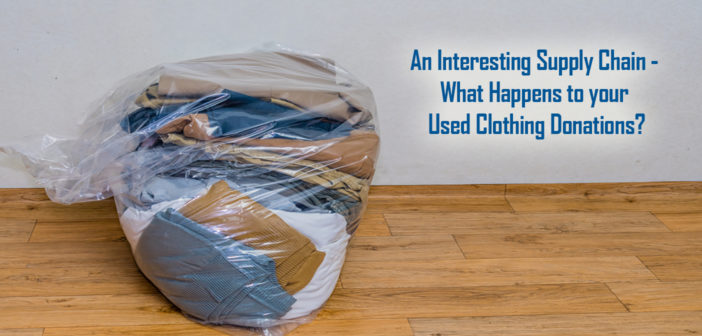I ran across an article that caught my eye as I was planning my annual “Shop Your Closet” blog. Sorry, but that blog will need to wait until next time 😊! “No One Wants Your Used Clothes Anymore” focused on what really happens to that old clothing that we think may be going to someone that can use it. There is in fact a global network of traders that “collects the old clothes that NOBODY wants, grades them and transports them around the world to be recycled, worn again or turned into rags and stuffing. Now that cycle is breaking down. Fashion trends are accelerating, new clothes are becoming as cheap as used ones, and poor countries are turning their backs on the secondhand trade. Without significant changes in the way that clothes are made and marketed, this could add up to an environmental disaster in the making.”
Panipat, India has served as the world’s largest recycler of woolen garments for over two decades, repurposing old clothes into cheap blankets for disaster – relief operations, becoming a crucial outlet for the $4 Billion used-clothing trade. This worked great until China swooped in and could produce many more new blankets at a cheaper price. Even Panipat was forced to change to remain profitable – this may be good news for some but is bad news for donors and the environment.
This got me to thinking – what does happen to my used clothes AFTER I drop them off at Goodwill. I think I’m being a good citizen but maybe not. “Here’s What Goodwill Actually Does With Your Donated Clothes” was a real eye-opener for me. According to the Huffington Post, “Americans alone produced 15.1 million tons of textile waste in 2013, and around 85 percent of that ended up in landfills, according to the Environmental Protection Agency. On average each American throws away roughly 70 pounds of clothing and other textiles per year, equivalent in weight to more than 200 men’s T-shirts.”
When you drop your clothes off at Goodwill, it is held on the retail floor for approximately four weeks until it is sent onward. The next step is the Goodwill outlets where you can buy garments by the pound and where prices are kept very low to encourage purchases. Whatever is not sold in the outlets moves on to Goodwill auctions where bidders can purchase bins of garments for as low as $35. If clothes still have not sold, they are sent to textile recycling organizations. The article sites one organization – S.M.A.R.T. (a trade association that recycles textiles) where “45% of clothing that makes it to S.M.A.R.T. is either re-sold into the U.S. used clothing industry or sent overseas into markets with more demand. But this isn’t necessarily a good thing. Obviously, re-selling clothes into the U.S. secondhand market just encourages them to make the cycle all over again. Beyond that, 30 percent of donated clothes at S.M.A.R.T. get cut into rags for industrial use, and 20 percent is processed into a soft fiber filling for furniture, home insulation, car sound-proofing and more.” Only 5% of all donations end up in landfills but this is still a staggering amount. We have not even considered the waste that is created during the clothing manufacturing process which is 4% of the world’s overall waste or 92 million tons – scary.
What is the answer to some of these issues? I don’t have one, but luxury brands and fashion houses are jumping on the social responsibility bandwagon to try to reduce waste at the source AND find ways to create new garments from recycled materials. Consumers are putting pressure on brands and retailers to be environmentally conscience which is the right thing to do. Now that you know about the supply chain that supports your used clothing donations, will you think twice before buying yet another piece of clothing that you don’t really need 😊!
Let us know what you think and join in the conversation . . . . . .

